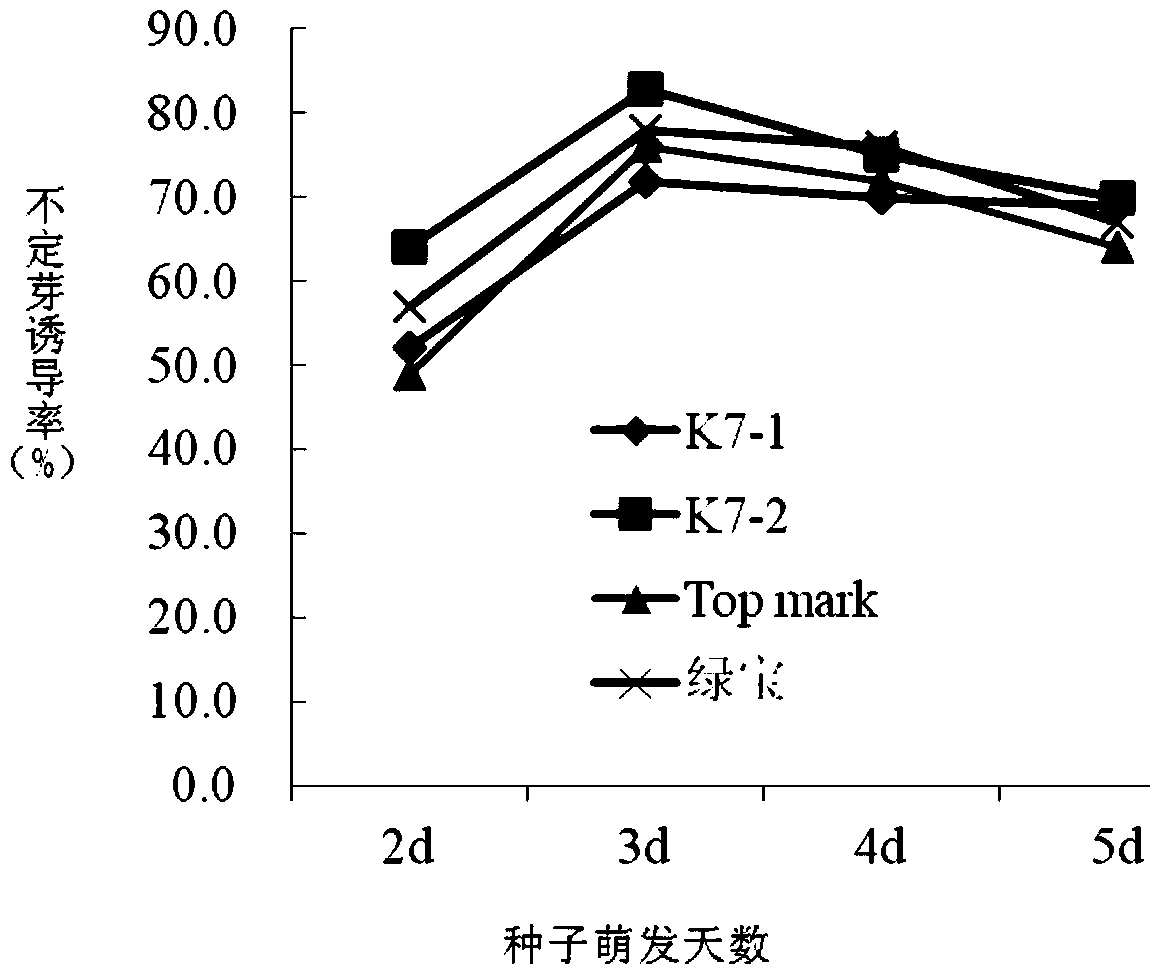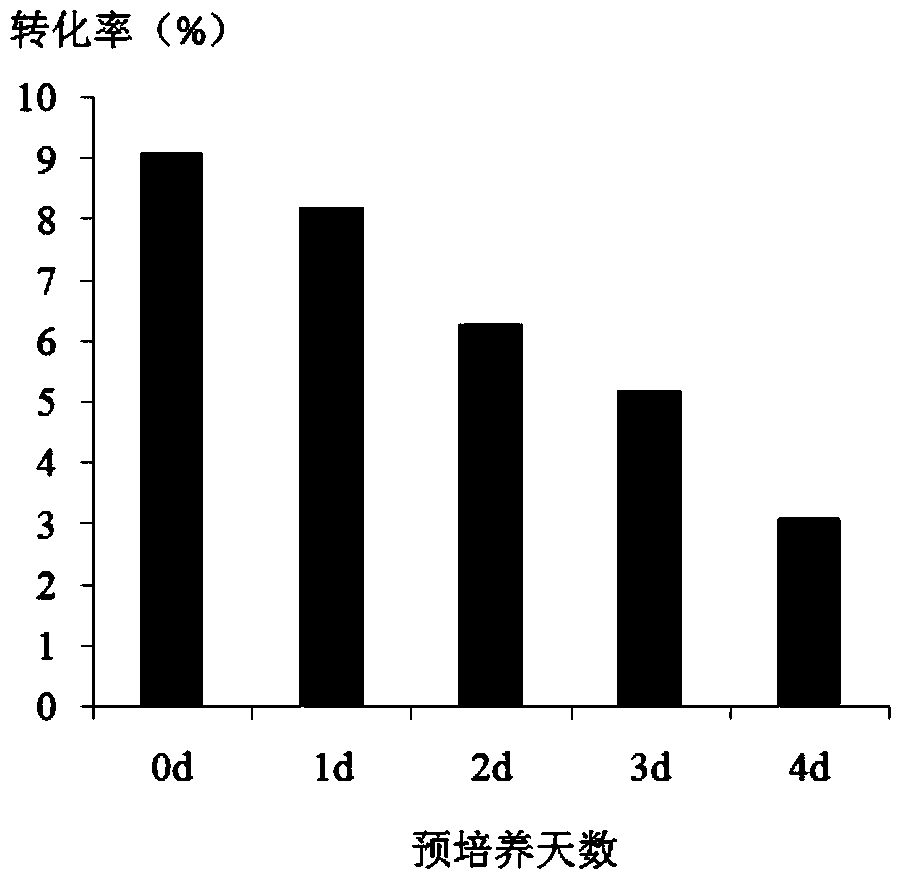A method for in vitro regeneration of muskmelon and its application in muskmelon genetic transformation
An in vitro regeneration and melon technology, applied in the biological field, can solve the problems of low differentiation rate of direct differentiation adventitious buds, difficulty in callus differentiation and budding, poor repeatability of regeneration system, etc.
- Summary
- Abstract
- Description
- Claims
- Application Information
AI Technical Summary
Problems solved by technology
Method used
Image
Examples
Embodiment 1
[0095] Embodiment 1, the method for in vitro regeneration of muskmelon
[0096] The method of muskmelon regeneration in vitro is as follows:
[0097] 1. Germination of seeds
[0098] The experiment was repeated three times, and the steps for each repetition were as follows:
[0099] (1) Seed disinfection: pick 30 plump melon (K7-1, K7-2, Topmark or Emerald) seeds, peel off the seed coat, soak in 70% (volume ratio) ethanol aqueous solution for 20-30s, and use Bacteria washed 2 to 3 times. Then the melon seeds were sterilized with 1% (mass to volume ratio) sodium hypochlorite aqueous solution for 10 minutes, washed with sterile water for 4 to 5 times, and blotted to dry excess water with sterile filter paper. (2) Place the sterilized seeds on MS solid medium at 28°C (26°C to 30°C in practical applications), culture in dark for 2 days, and then count the seed germination rate, seed germination rate = number of germinated seeds / sowing Number of seeds x 100%.
[0100] Accordi...
Embodiment 2
[0136] Embodiment 2, the application of the method for the in vitro regeneration of muskmelon according to embodiment 1 in establishing the genetic transformation method of muskmelon
[0137] 1. Construction of recombinant Agrobacterium EHA105 / pCHF3-Pm-2F
[0138] 1. Using the double-stranded DNA molecule shown in sequence 1 in the artificially synthesized sequence list as a template, use the artificially synthesized primer PchAF: 5-TC GAGCTC GATGGCAGAATCAATTCTG-3' (the underlined part is the SacI restriction site) and primer PchAR: 5'-CA GGATCC GTTAGTTCATGGTGGGAAGC-3' (the underlined part is the BamHI restriction site) was amplified by PCR to obtain a PCR amplified product and recover it.
[0139] 25μL PCR reaction system includes 50ng template DNA, 2.5μL 10×Buffer (containing 15mM MgCl 2 ), 1.0 μL dNTPs (2.5 mM concentration), 1 U Taq DNA polymerase, 1 μL primer PchAF (10 μM), 1 μL primer PchAR (10 μM) and ddH 2 O. Among them, Taq DNA polymerase, 10×Buffer (containing ...
PUM
 Login to View More
Login to View More Abstract
Description
Claims
Application Information
 Login to View More
Login to View More - R&D
- Intellectual Property
- Life Sciences
- Materials
- Tech Scout
- Unparalleled Data Quality
- Higher Quality Content
- 60% Fewer Hallucinations
Browse by: Latest US Patents, China's latest patents, Technical Efficacy Thesaurus, Application Domain, Technology Topic, Popular Technical Reports.
© 2025 PatSnap. All rights reserved.Legal|Privacy policy|Modern Slavery Act Transparency Statement|Sitemap|About US| Contact US: help@patsnap.com



